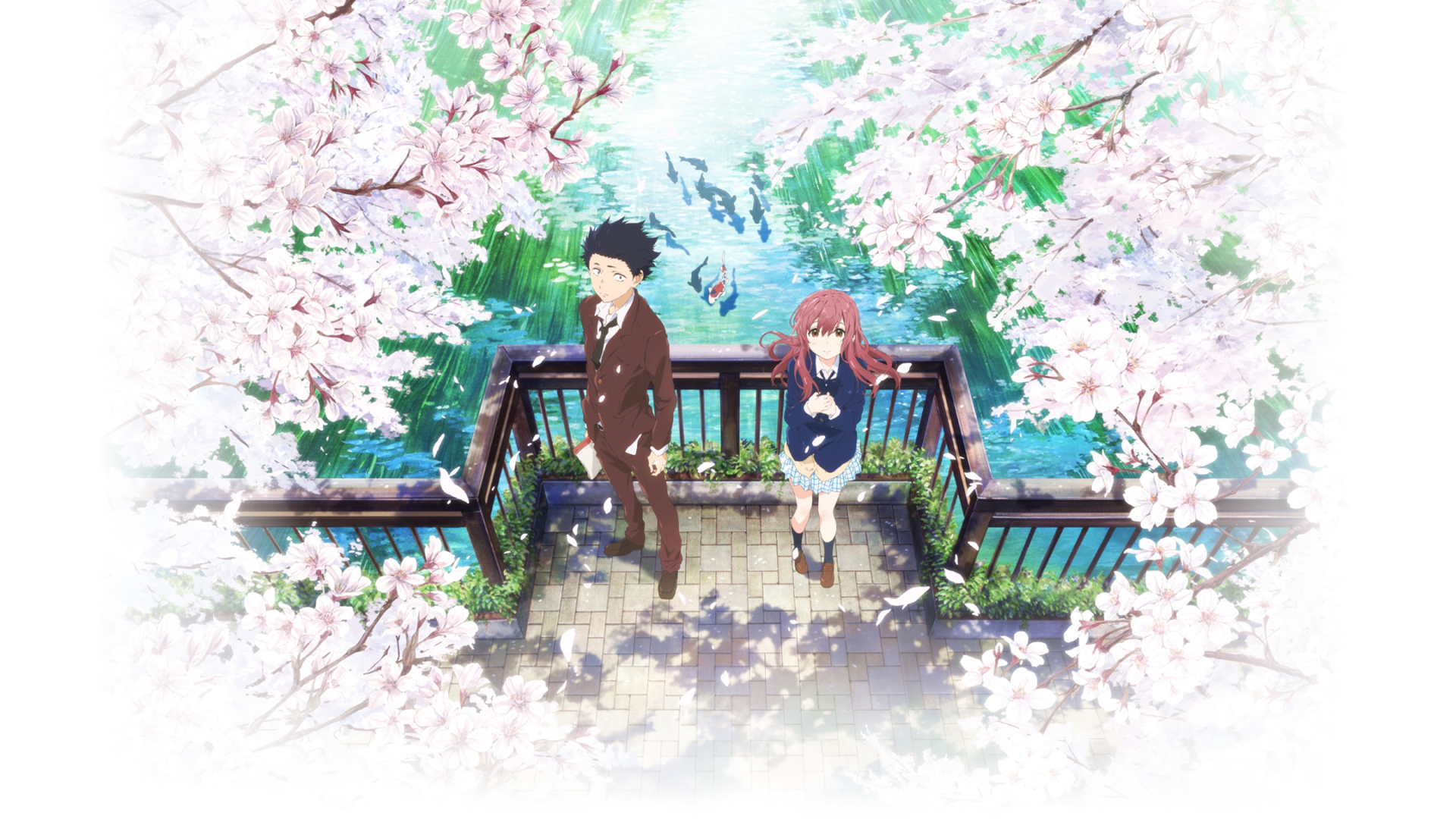
**Spoilers**
When it comes to addressing delicate and uncomfortable subject matter such as bullying, depression, or suicide within a fictional narrative, a writer must take great care in considering the various nuances and complexities that these issues entail in providing an honest and meaningful discussion surrounding them. Some narratives that tackle these issues can, unfortunately, fall into the trap of oversimplifying them and end up coming across as contrived, disingenuous, and even problematic as a result. A Silent Voice (2016) is not one of those narratives. This 130-minute long anime movie delivers a hard-hitting, poignant yet mindful assessment of the pervasiveness of bullying and the many forms it can take, the struggles and anxieties that people with disabilities face in connecting and communicating with others, and ultimately, the journey towards self-forgiveness and self-discovery. It is a stunningly beautiful and heartfelt piece of animation that speaks volumes of the potential of anime as an artistic medium to critically evaluate sensitive topics with the level of sincerity and nuance that they deserve.
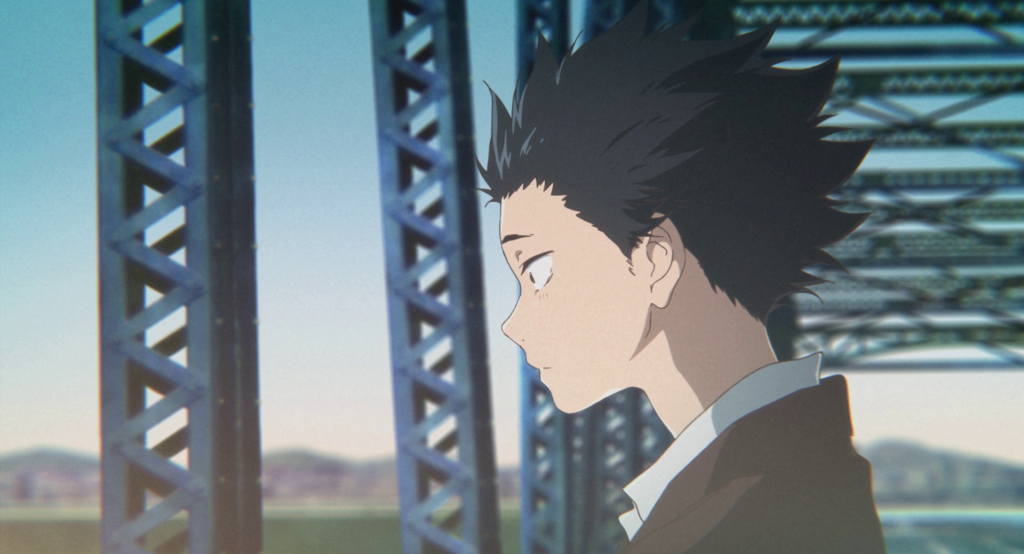 Image by Kyoto Animation
Image by Kyoto Animation
A Silent Voice opens with a teenage Shoya Ishida quitting his part-time job, selling his belongings, closing out his bank account, and offering the collected savings to his mother while marking off dates on a torn calendar. The film then cuts to him walking up to a bridge and standing atop it in an attempt to fall off, only to be stopped by the sound of a nearby firework going off. It is a despondent prelude to the film that establishes grim and unsettling implications as there is no initial context given to this sequence of events. Immediately after, the film somewhat jarringly cuts back to a 12-year old Shoya in his primary school days hanging out with his friends to the tune of My Generation by The Who playing in the background. A slice-of-life sequence depicting Shoya’s relaxed and carefree boyhood before he would meet the new girl at his school, Shoko Nishimiya, a timid and closed-off deaf girl who would eventually change his life forever.
 Image by Kyoto Animation
Image by Kyoto Animation
While the first act of the film serves to establish our protagonists, it also serves as an uncompromising confrontation of the vicious reality of childhood bullying, as well as the various pervading forms such bullying can take. The bullying depicted in the film can be quite difficult to watch at times, not only through Shoya’s outwardly despicable actions towards Shoko but also through the more passive, yet equally harmful apathetic role of other classmates. Many of whom would enable his behaviour, laughing it off as harmless fun, or casually disregard Shoko’s only means of communicating with them, or even ostracise other students who would try to understand Shoko by accusing them of trying to ‘score brownie points.’
At this point, it is easy and natural to despise Shoya and the other bullies and to dismiss them as the horrible, cruel brats that they were. But it’s not the film’s intention to point fingers and vilify its characters so much as it sets out to examine what made these characters do what they did, the consequences of their actions, and how they managed to evolve as a result. Sadly, the impulsive 12-year old Shoya depicted here was more inclined to respond with hostility and fear toward a sudden change beyond his understanding within his environment rather than to embrace it and let it in. In Shoya’s naïve mind, Shoko had felt like an intruder, a disruption to his carefree life, and knowing that this feeling was quietly mutual among his classmates gave him an excuse to treat her horribly. He would only begin to understand the severity and repercussions of his actions when his fellow classmates would eventually sell him out after his teachers had caught on to him, and, in turn, he would become the victim of the same bullying and ostracization that Shoko had endured.
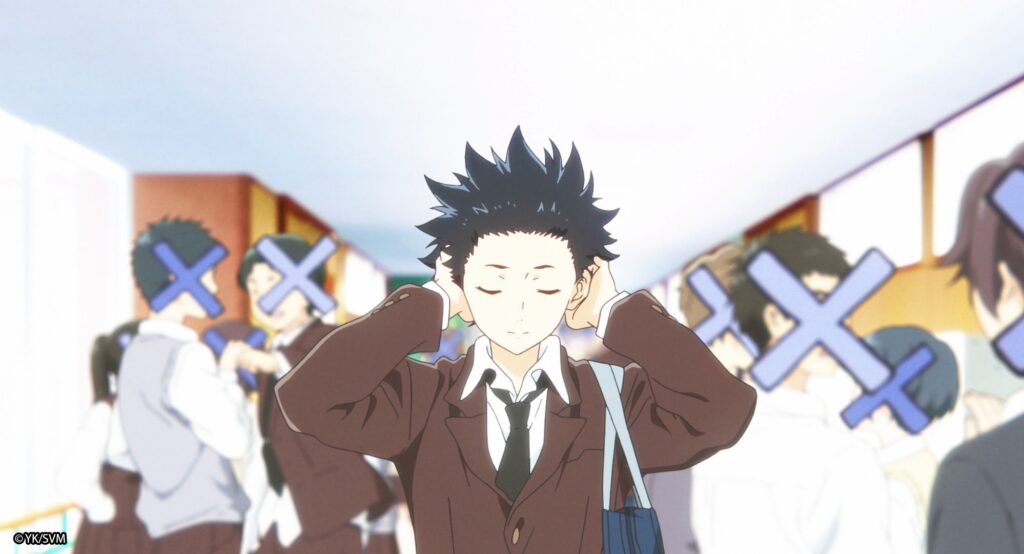 Image by Kyoto Animation
Image by Kyoto Animation
Shoya’s subsequent isolation, along with his immense guilt over his past actions, would go on to foster severe depression and self-loathing, which defines his interactions to the point that he would close everyone off in high school as a form of penance. What was once an extroverted and troublemaking little punk had now become a quiet, detached, teenage outcast, too guilt-ridden and self-pitying to look anyone in the eye. The X stickers plastered on people’s faces, as well as his downcast gaze, and the cupping of his ears in public are all visual representations of Shoya’s alienation, almost as if he subconsciously wants to feel what Shoko had felt to understand her. At this point, Shoya is trying to find a natural reason to meet Shoko again but feels unworthy to face her. Her younger sister, Yuzuru, distrustful of Shoya, calls him out on his efforts, suggesting that he’s merely putting on a false display of kindness to satisfy his ego. However, it’s not until he opens up to fellow student Tomohiro Nagatsuka in quite possibly one of the most endearing animated friendships put to film that Shoya gradually begins to overcome his alienation. While he has yet to fully come to grips with his feelings of dejection and self-disgust, Shoya realizes through Nagatsuka that he is still capable of forming bonds with others, and he musters the courage to restore his fractured relationship with Shoko.
At its narrative core, A Silent Voice is about Shoya and Shoko’s in-depth cultivation of an interpersonal relationship, nurtured by Shoya’s sincere resolve to reconcile with her. During the first act, Shoko would try eagerly to befriend Shoya and the other students through her notebook, only to have her efforts trampled on and dismissed, with every one of her failed attempts being effectively soul-crushing to witness. The film would go on to chronicle a repentant Shoya’s conscious efforts in gradually rebuilding his friendship with Shoko after he had bitterly rejected it during their childhood. As a teenager, he would meet up with Shoko to return her notebook to her and even asked her if they could be friends in sign language. This fateful encounter would be his first stepping stone towards a potential reconciliation with her. The silent scene between the two on the train beautifully captures their progress towards their reconnection. Not knowing what to say to her, Shoya is initially distant and struggles to look Shoko in the eye, but by sending him emails on his phone, she manages to reach out to him. As they exchange a warm glance, they both begin to find comfort in each other’s presence in this brief, yet captivating sequence, enveloped in the gentle glow of the evening sun.
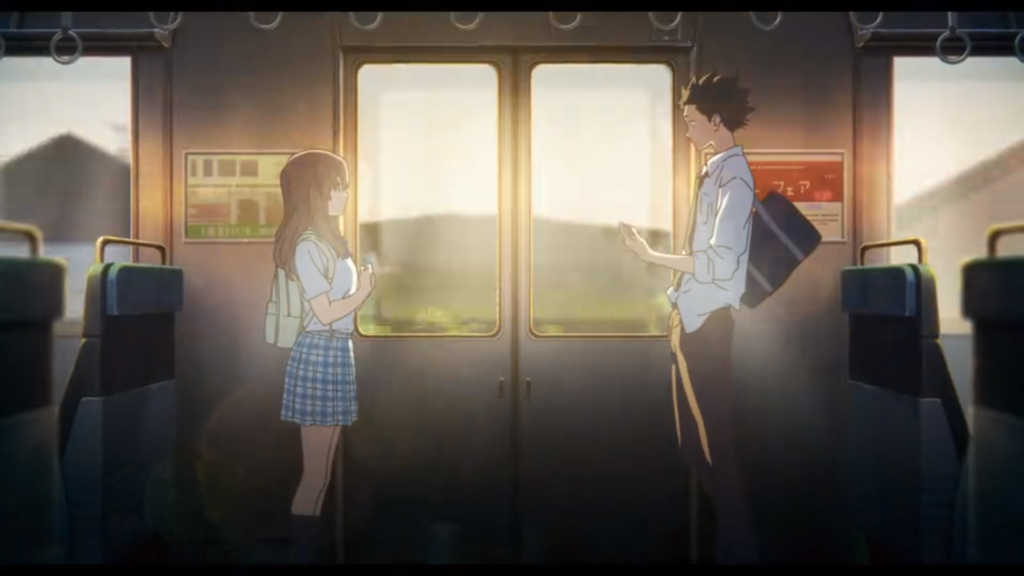 Image by Kyoto Animation
Image by Kyoto Animation
Director Naoko Yamada pays close attention to Shoya and Shoko’s emotional journey and carefully examines their struggle to accept themselves with empathy and sensitivity in mind. While Shoya begins to form a circle of friends with his former classmates as his relationship with Shoko continues to blossom, their firmly rooted personal issues are laid bare in heart-rending detail. While Shoya understands that he risks opening old wounds by letting certain people from their past back into their lives, particularly former classmate and fellow bully, Naoka Ueno, he nonetheless concludes that everything that happened in the past was his fault. His bullying of Shoko was something that would weigh upon his shoulders for the rest of his life. His internalized self-denigration causes him to believe that he is unworthy of happiness and friendship, and he shuts his old friends out once again, even Nagatsuka. At the same time, behind her warm, yet faint smile, Shoko is also grappling with a deeply-entrenched self-loathing of her own, stemmed from an internalized belief that her existence is a hindrance to everyone around her, particularly Shoya. She frequently apologizes to him for things that aren’t her fault and feels responsible for his suffering. Her self-blame, a product of having been made to feel different during her childhood, is something that she masks behind a façade of forced happiness. She also hates herself for having no control over her disability, how it affects her daily life and her interactions with others, and the emotional weight of her anguish in response to how her condition is worsening is agonizing to watch.
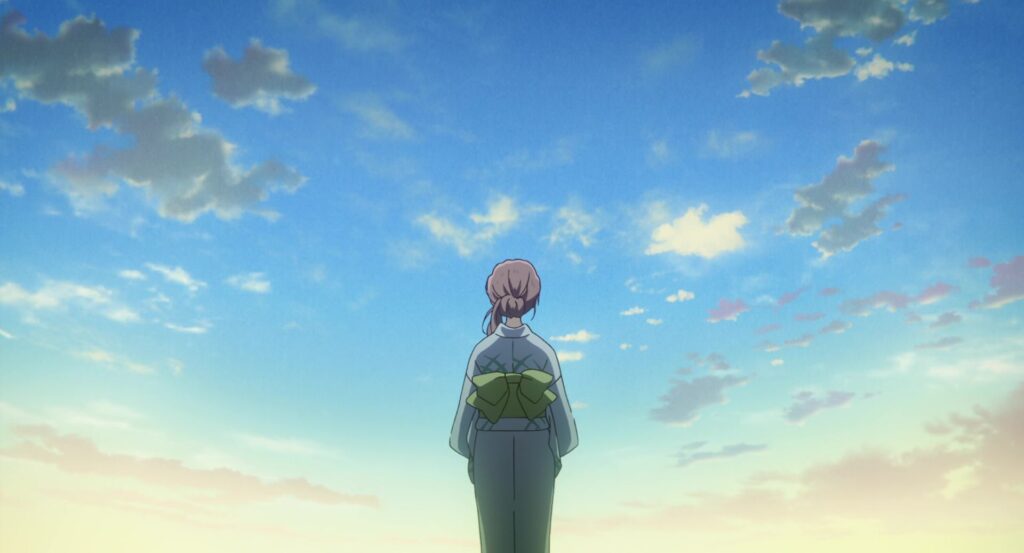 Image by Kyoto Animation
Image by Kyoto Animation
Despite Shoya’s increasing attempts to make Shoko like herself, her inner turmoil continues to run deep, and it culminates in a shocking moment where Shoko attempts to jump off a balcony during the fireworks festival. A climactic sequence that had been carefully alluded to throughout the film, directly mirroring the previously-mentioned opening scene with Shoya on the bridge. The moment is an emotional gut-punch that gradually builds up through an escalating intensity in the film’s soundtrack coupled with Shoya’s desperation in trying to save her, and it concludes in a lingering silence as Shoko disappears from the audience’s and Shoya’s view. The silence breaks when Shoya manages to grab Shoko’s arm, and it’s in this instant when his past choices hit him at full force. He internally promises to open up to the world and listen to others, and he realizes that he had never apologized to Shoko for everything he had done to her. In the end, Shoya manages to prevent Shoko from falling, only for himself to plunge into the icy river below and slip into a coma. A tragic consequence that now Shoko seeks to atone for as she tearfully performs dogeza at the feet of Shoya’s mother at the hospital.
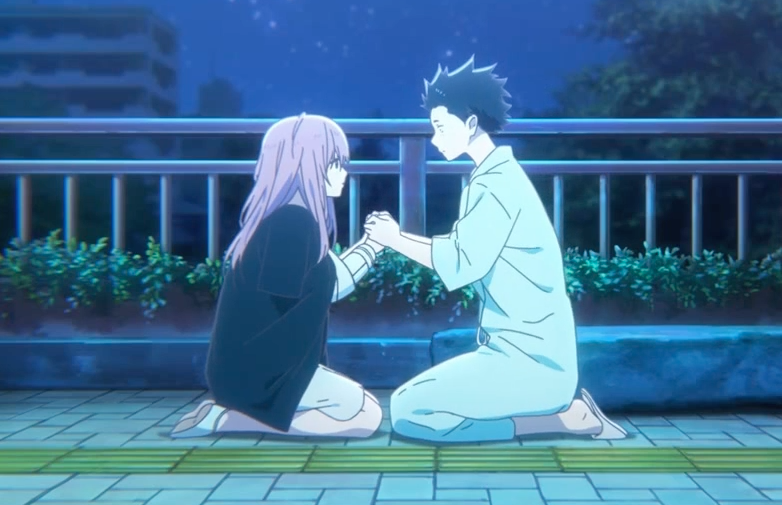 Image by Kyoto Animation
Image by Kyoto Animation
Following these tragic circumstances, A Silent Voice dedicates its closing 25 minutes to depicting the final steps Shoya and Shoko have to take on their journey towards forgiving themselves and understanding one another. Just as Shoya had devoted himself to restoring their relationship, Shoko promises to ‘restore’ what she felt she had ‘destroyed’ by meeting with each of Shoya’s friends in the hopes of reuniting them. After Shoya recovers from his coma, he and Shoko immediately meet on the bridge to openly confront and come to terms with their mistakes. Shoya solemnly apologizes to Shoko for the pain that he had caused her in the past and present, believing that his selfish actions had inadvertently led her into making the choice that she did. On the other hand, Shoko blames her own selfishness in wanting to disappear for not being able to change. In addressing their past openly and in earnest, Shoya and Shoko arrive at an ultimate resolution about themselves, one that serves as the central message of the film; the realization that the choices they may have made are not worth causing themselves further pain. They are worthy of loving themselves regardless and have the chance to move forward with each other’s support. As Shoko promises to help Shoya continue living, they, at last, reach one another unreservedly, saving each other from their own personal darkness.
The film closes off on an uplifting and triumphant note with Shoya overcoming his toughest hurdle with the support of Shoko and his friends, letting the world back in. The moment when he un-cups his ears and looks up at the people around him at the school festival as the Xs fall from their faces is nothing short of soul-stirring, and as tears of utter joy flowed from Shoya’s eyes, I admittedly found it difficult to choke back my own.
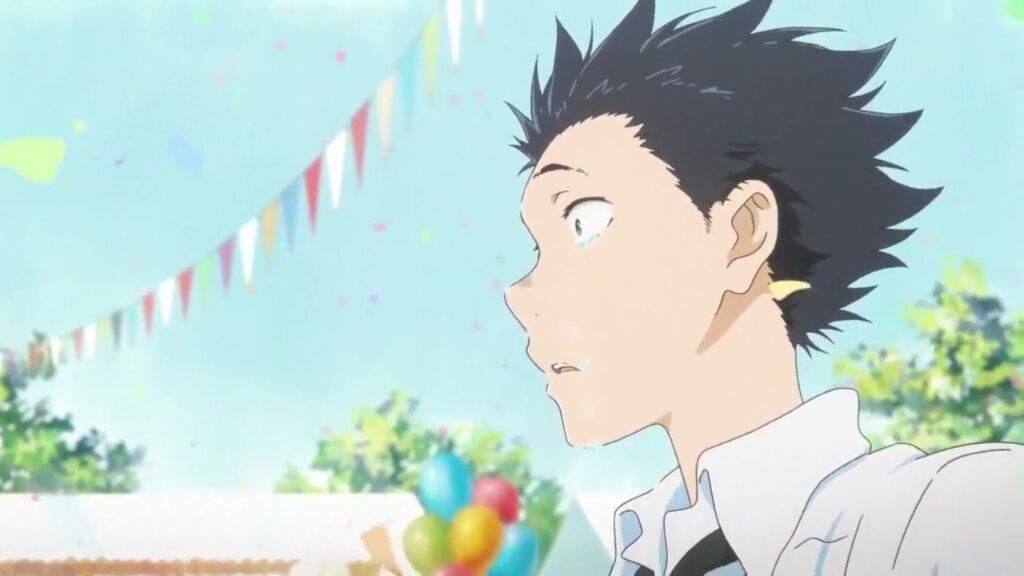 Image by Kyoto Animation
Image by Kyoto Animation
A Silent Voice is a moving and sumptuously animated tale that chronicles a profoundly human journey towards empathy, acceptance, and redemption. It’s a common drawback for productions that tackle dark subjects such as bullying, depression, and suicide to come across as overly-gratuitous and insensitive in their approach. However, A Silent Voice takes great care in examining these issues with compassion and sincerity through its mindful regard and attention towards its characters’ emotions. Its intricate blend of visual, auditory, and tactile language to illustrate the communicative journey of Shoya and Shoko towards a meaningful relationship is, in itself, captivating to behold. Both Japanese and English voice casts provide splendid performances in their own right, but I need to give a special mention to deaf actress Lexi Cowden for her performance as Shoko in the English dubbed version. For what little spoken dialogue she had, Cowden had provided an emotional weight and a sense of authenticity to Shoko’s every line. The world of anime is one of boundless storytelling potential, at times for better or for worse, but if such a medium can provide truly masterful and wholehearted experiences like A Silent Voice, then I can’t help but look forward to what to watch next.
